Discover Florida Nature
It's time to explore the natural Florida


|
|
|
|
|
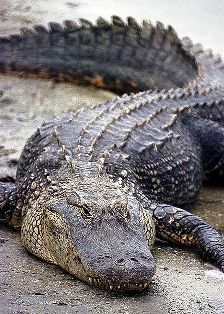 American
Alligator
(Rana capito) SSC- Alligators occur from southeast American
Alligator
(Rana capito) SSC- Alligators occur from southeast 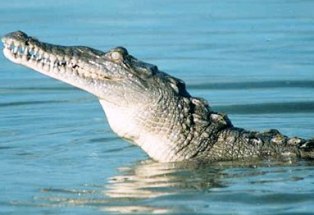 American
Crocodile
(Crocodylus acutus) Endangered- American crocodiles live in
coastal areas throughout the Caribbean, and occur at the northern end of
their range in south American
Crocodile
(Crocodylus acutus) Endangered- American crocodiles live in
coastal areas throughout the Caribbean, and occur at the northern end of
their range in south 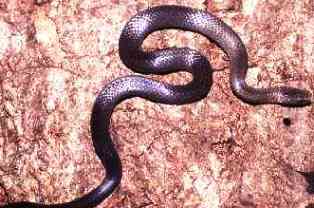 Key
Ringneck Snake
(Diadophis punctatus acricus) Threatened- The Key Ringneck snake is a
non-venomous snake found only on the lower keys including Big Pine,
Little Torch, and Middle Torch. It is not found outside of Florida. Due
to its very small range it is listed as a threatened species in the
state of Florida. The Key Ringneck's habitat consist of pinelands,
tropical hardwood hammocks, and around limestone outcroppings. The
average adult size is six inches long. Adults are small and
slender-bodied with a slate gray body. Unlike other ringneck snakes, the
ring normally present around the neck is indistinct or completely
absent. The belly is bright yellow, fading to orange-red beneath the
tail. There is a single row of half-moon spots down the center on the
belly. Key
Ringneck Snake
(Diadophis punctatus acricus) Threatened- The Key Ringneck snake is a
non-venomous snake found only on the lower keys including Big Pine,
Little Torch, and Middle Torch. It is not found outside of Florida. Due
to its very small range it is listed as a threatened species in the
state of Florida. The Key Ringneck's habitat consist of pinelands,
tropical hardwood hammocks, and around limestone outcroppings. The
average adult size is six inches long. Adults are small and
slender-bodied with a slate gray body. Unlike other ringneck snakes, the
ring normally present around the neck is indistinct or completely
absent. The belly is bright yellow, fading to orange-red beneath the
tail. There is a single row of half-moon spots down the center on the
belly. 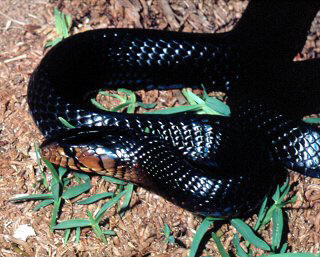 Eastern
Indigo Snake
(Drymarchon corais couperi) Threatened- The Eastern Indigo Snake is
found throughout Florida and southeast Georgia. Indigos, are non
venomous snakes that are widespread throughout the state, but nowhere
are they abundant. They occur in
hardwood forests, moist hammocks,
pine flatwoods,
prairies, and around cypress ponds. Because it seeks refuge in gopher
tortoise burrows, along with diamondback rattlesnakes and many other
organisms, in some parts of Florida the indigo is called the 'gopher
snake'. The Eastern Indigo snake is a long snake, averaging from 60-74
inches but the record length is 103 inches long! Adults are large and
thick bodied. The body is glossy black and in sunlight has iridescent
blue highlights. The chin and throat is reddish or white, and the color
may extend down the body. The belly is cloudy orange and blue-gray. Eastern
Indigo Snake
(Drymarchon corais couperi) Threatened- The Eastern Indigo Snake is
found throughout Florida and southeast Georgia. Indigos, are non
venomous snakes that are widespread throughout the state, but nowhere
are they abundant. They occur in
hardwood forests, moist hammocks,
pine flatwoods,
prairies, and around cypress ponds. Because it seeks refuge in gopher
tortoise burrows, along with diamondback rattlesnakes and many other
organisms, in some parts of Florida the indigo is called the 'gopher
snake'. The Eastern Indigo snake is a long snake, averaging from 60-74
inches but the record length is 103 inches long! Adults are large and
thick bodied. The body is glossy black and in sunlight has iridescent
blue highlights. The chin and throat is reddish or white, and the color
may extend down the body. The belly is cloudy orange and blue-gray.
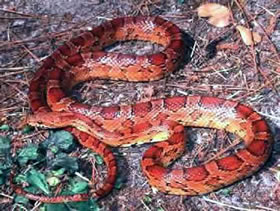 Red
Rat Snake
(Elaphe guttata) SSC- The red rat snake, often called the corn snake is
a colorful non venomous snake found in the Florida peninsula. The corn
snake is primarily active at night. It is both a terrestrial borrower
and extremely good climber. It is found under rocks and logs, and in
trees under bark and within palm fronds. Adults are usually 18-44 inches
long but have been recorded as long as 72 inches. Red rat snakes are
orangish-brown with black bordered orange, red, or brownish blotches.
The belly usually is a black and white checkerboard pattern, though
orange may also be present. The underside of the tail has 2 black
stripes. There is a spear-shaped pattern on the head and neck. Red
Rat Snake
(Elaphe guttata) SSC- The red rat snake, often called the corn snake is
a colorful non venomous snake found in the Florida peninsula. The corn
snake is primarily active at night. It is both a terrestrial borrower
and extremely good climber. It is found under rocks and logs, and in
trees under bark and within palm fronds. Adults are usually 18-44 inches
long but have been recorded as long as 72 inches. Red rat snakes are
orangish-brown with black bordered orange, red, or brownish blotches.
The belly usually is a black and white checkerboard pattern, though
orange may also be present. The underside of the tail has 2 black
stripes. There is a spear-shaped pattern on the head and neck.
|
|
|
Advertise | Privacy Statement | Dog Encyclopedia | Video |Contact | Alaska Nature |
|